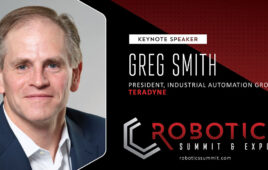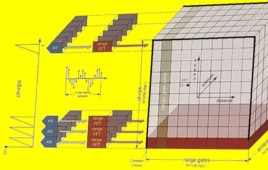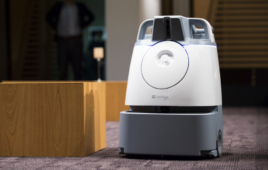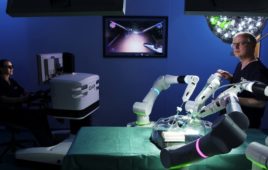
Haier, a China-based consumer electronics and home appliances company, has partnered with SoftBank Robotics Group Corp to build a custom version of the Pepper robot. The companies will develop a custom version of the humanoid for Haier’s Smart Home platform and its retail stores in China.
This version of the Pepper robot will be built on Haier’s “U+OS operating system. At Haier’s retail stores, Pepper can introduce products to customers, provide guidance on products, and collect customer feedback. In smart homes, Haier said the Pepper robot can essentially be a smart home controller to optimize Haier appliances.
Haier is the world’s biggest producer of major appliances, with a volume market share of roughly 10 percent. According to Nikkei, Haier’s sales network in China spans about 200,000 retail stores. This is Haier’s first foray into the service robot market. Its plan is to develop a service robot division into an independent business unit. Haier has reportedly already made preparations at the channel, service and product levels.
“The service robot is a natural extension and an effective complement to Haier’s smart home strategy,” said Wang Ye, Vice President of Haier Home Appliance Industry Group. “Haier will continue to improve the features and functions available to consumers from service robots within smart homes and accelerate the development of the industry.”
Pepper robot in homes
Softbank has said “ultimately, the vision is to have a robot in everybody’s home.” For the last couple of years, however, Softbank has focused mainly on commercial applications. The Pepper robot has worked at bars, cruise ships, restaurants and retail stores mainly as a guide and sales assistant.
As of early 2017, Softbank said there were more than 20,000 Pepper robots in use around the world. And, yes, there are some Pepper robots in consumer homes, but Softbank won’t disclose how many. So it can’t be many.
Pepper’s price is too expensive for most consumers. It costs nearly $10,000 for just three years, including insurance and a monthly base fee. There are much cheaper ways to monitor smart home appliances than Pepper.
Softbank said in 2015 that it’s willing to sell Pepper at a loss for the first four years. At the time, it said it expected Pepper to bring in profits by the fifth year and become a major force in revenues in 20-30 years.
Softbank Robotics was $274 million in debt in July 2017, according to financial statements submitted to the Kanto Local Finance Bureau by SoftBank group for the fiscal year ended March. This is likely why Softbank acquired Boston Dynamics for an undisclosed amount in June 2017. The deal brought together two popular humanoid makers that, despite engineering prowess, can’t make money.
Pepper has drawn attention for its ability to temporarily entertain crowds. China will be another test to see how Pepper fares in the consumer world. But don’t expect much to change.
Privacy Issues with Softbank’s Robots
Researchers at security firm IOActive recently have conducted a ransomware attack on Softbank’s NAO. The firm said the same ransomware would work on Pepper. The ransomware installed on Nao caused the robot to demand bitcoin. The researchers could modify system files and the robot’s behavior, such as forcing it to say threatening messages.
IOActive noted a hacked robot’s ability to steal data or display controversial content, such as pornography, if it has a screen.
“Ransomware for robots is a real threat with potentially huge economic implications for businesses — even more than regular ransomware,” the researchers wrote.
And this isn’t the first time IOActive highlighted the vulnerabilities of SoftBank’s robots. The team released a research paper in August 2017 that essentially turned NAO and Pepper robots into spying devices.
Filed Under: Appliance engineering + home automation, The Robot Report, Robotics • robotic grippers • end effectors





Tell Us What You Think!